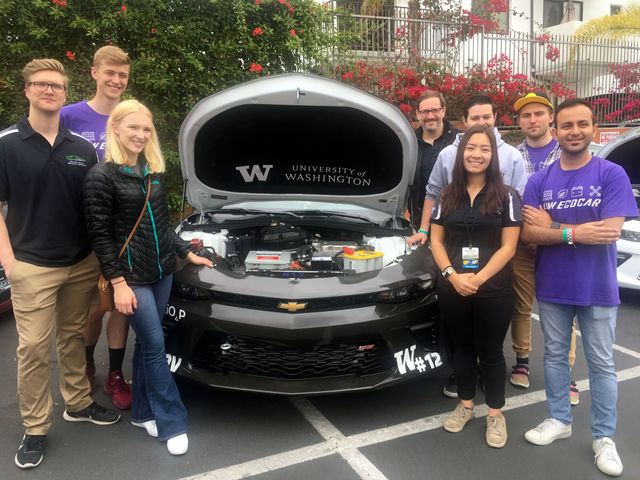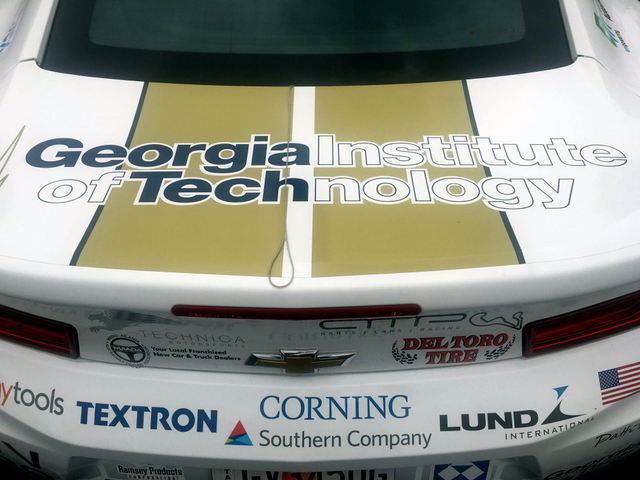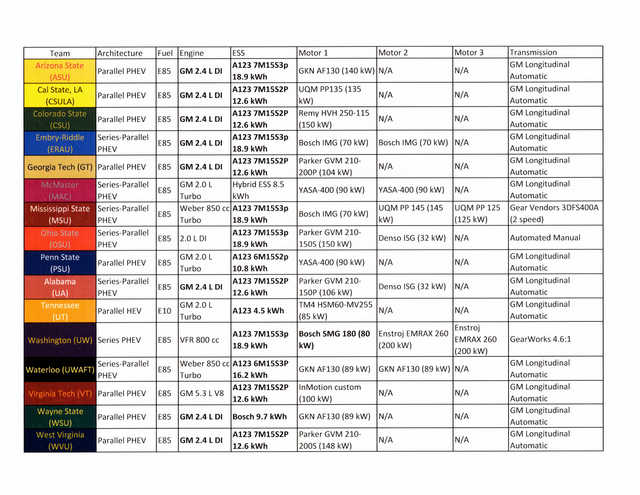Converting a Camaro to Hybrid Power
The challenge was straightforward, if a little off-beat—take an iconic muscle car with a performance heritage dating back more than 50 years and turn that car into an efficient hybrid. The EcoCAR3 project, sponsored by General Motors and the U.S. Department of Energy drew 16 North American universities as participants.

Each university began in 2014 with the challenge to design a hybrid-electric power plant that would fit into one of the most iconic muscle cars, the Chevrolet Camaro. Each team of students took a different approach to combining hybrid technology with safety, drive quality, performance and energy efficiency, while hopefully reducing emissions.
The four-year program had yearly benchmarks measuring each university’s progress against a baseline. In year’s one through three, one university was awarded first place on its progress. At the end of the four years, an overall winner was crowned. While all the universities had accomplishments along the way, it was Ohio State University that took all four first place awards.
Up Close with the Winners
Clean Fleet Report had the opportunity to attend the final day of the program, held at the Magic Castle in Hollywood, California. The site seemed appropriate as not only was technology and hard work at play, but a certain amount of magic must have been too. The students brought their completed cars for the press to drive. Just by chance, CFR drove only one car and it was that from the winning OSU team. Their choice of drivetrain was a Ford 2.0-Liter four-cylinder engine plus twin electric motors to create a parallel plug-in electric vehicle. The 390 total system horsepower was impressive. The parallel hybrid system is like what is found in Toyota and Lexus hybrids.

EcoCAR3 had aggressive, but realistic goals designed to develop the next generation of engineers by encouraging them to collaborate with the government, industry and academia. One of the key basics of the program is advancing STEM guidelines (STEM=Science, Technology, Engineering and Mathematics), a program with national standards that are being implemented from grade school through universities. EcoCAR3 wanted to accelerate the development and real-world demonstration of emerging automotive technologies through these business leaders of tomorrow. And lastly, but certainly equally as important as the lofty goals, EcoCAR3 is creating a training ground for future employees. There is an estimate that 40-percent of those involved with the EcoCAR3 program will be hired on at an auto manufacturer, with the others working in a related industry.

It was important for EcoCAR3 to encourage and promote cooperation and communication between the participating students. By hosting meetings three times each year, students met with EcoCAR3 leaders and program sponsors to bounce ideas off each other. Students learned from seeing how competing schools approached a challenge, and then shared their knowledge. The competition among students became an inclusive camaraderie.
The future of advanced vehicle technology is in good hands at these 16 universities, and many more around the world. Clean Fleet Report applauds General Motors, the U.S. Department of Energy and all of the EcoCAR3 sponsors, as well as the participating universities, for being leaders in the fast-changing world of vehicle technology.
Program Criteria for EcoCAR3
- Energy storage system design and integration
- Hardware and software-in-the-loop simulation and testing
- Human-machine interface (HMI) for infotainment and displays
- Vehicle connectivity and embedded control systems
- Powertrain component bench testing
- Use of vehicle modeling and simulation tools
- Improve aerodynamics

The teams and the technologies they chose
Participating Schools in the EcoCAR3 Competition
Arizona State University – Tempe, AZ
California State University Los Angeles – Los Angeles, CA
Colorado State University – Fort Collins, CO
Embry-Riddle Aeronautical University – Daytona Beach, FL
Georgia Institute Of Technology – Atlanta, GA
McMaster University – Hamilton, Ontario, Canada
Mississippi State University – Starkville, MI
Ohio State University – Columbus, OH
Pennsylvania State University – University Park, PA
University of Alabama – Tuscaloosa, AL
University of Tennessee, Knoxville, TN
University of Washington – Seattle, WA
University of Waterloo – Waterloo, Ontario, Canada
Virginia Tech University – Blacksburg, VA
Wayne State University – Detroit, MI
West Virginia University – Morgantown, W. VA
[rl_gallery id=”13524″]
